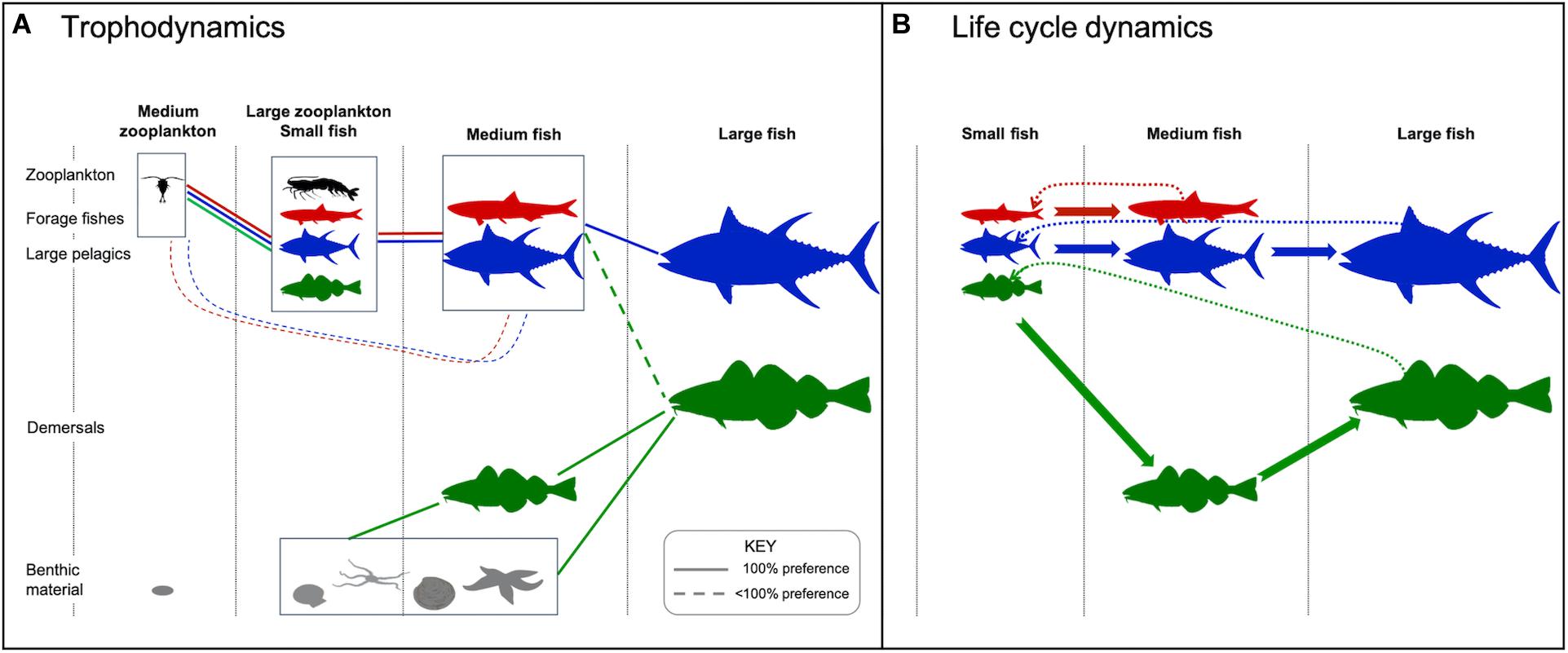Report on the Impact of Ocean Deoxygenation on Mesopelagic Fish Communities and Implications for Sustainable Development Goals
Executive Summary
This report analyzes the historical response of mesopelagic fish populations to severe ocean deoxygenation, providing critical insights into future climate change impacts and their direct relevance to the United Nations Sustainable Development Goals (SDGs). An analysis of a fish otolith record from a Mediterranean sediment core reveals a near-complete collapse of mesopelagic species, particularly lanternfish (Myctophidae), during the Sapropel S1 deposition event (approximately 7,000 to 10,000 years ago). This period was characterized by low oxygen levels in mid-depth waters. Concurrently, the ecosystem shifted to favor epipelagic species adapted to surface habitats. Following the reoxygenation of the water column approximately 7,000 years ago, mesopelagic lanternfish populations recovered, increasing threefold and dominating the ecosystem to the present day. These findings serve as a stark historical analogue, corroborating predictions that future anthropogenic warming and consequent ocean deoxygenation will severely deplete mesopelagic fish communities. Such a decline poses a significant threat to achieving SDG 14 (Life Below Water) by degrading marine biodiversity and ecosystem structure, and undermines SDG 13 (Climate Action) by impairing the ocean’s carbon storage capacity. Furthermore, it has cascading implications for SDG 2 (Zero Hunger) through its potential impact on global fisheries.
Introduction: Ocean Health and the Sustainable Development Goals
The expansion and intensification of Oxygen Minimum Zones (OMZs) due to anthropogenic climate change represents a critical challenge to marine ecosystems and the achievement of global sustainability targets. This phenomenon of ocean deoxygenation directly threatens the objectives outlined in SDG 14 (Life Below Water), which aims to conserve and sustainably use the oceans, seas, and marine resources. It is also intrinsically linked to SDG 13 (Climate Action), as the warming driving deoxygenation is a primary consequence of greenhouse gas emissions.
The Critical Role of Mesopelagic Ecosystems
Mesopelagic fish, inhabiting the ocean’s twilight zone (200-1000m depth), are fundamental to marine ecosystem function. Their contributions include:
- Food Web Integrity: They form a crucial link in marine food webs, serving as a primary food source for a wide range of predators, including commercially important fish species.
- Biological Carbon Pump: Through their daily vertical migration to feed in surface waters at night and return to depth during the day, they actively transport vast quantities of carbon from the upper ocean to the deep sea. This process is a vital component of the global carbon cycle and a key natural mechanism for climate regulation.
The immense biomass of mesopelagic fish, estimated to be one to two orders of magnitude greater than the world’s entire fisheries and aquaculture production, underscores their importance to ocean productivity and biogeochemical cycles.
Threats from Climate Change: Deoxygenation and SDG 13
Projected climate scenarios under SDG 13 frameworks anticipate continued ocean warming and deoxygenation. This is expected to compress the habitable vertical range for mesopelagic species, forcing them into shallower waters where they face increased predation and physiological stress. This study utilizes a paleo-oceanographic analogue from the Eastern Mediterranean Sea—the Sapropel S1 event—to investigate the long-term ecological consequences of such conditions and inform our understanding of future risks.
Historical Analysis: A Paleo-Oceanographic Case Study
Methodology: Reconstructing Past Marine Environments
This report is based on the analysis of fish ear bones (otoliths) recovered from a sediment core in the Aegean Sea. This method allows for the reconstruction of fish community composition and abundance over the last 11,400 years. By correlating fish population dynamics with geochemical and sedimentary evidence of past environmental conditions, specifically the hypoxic (low-oxygen) period of Sapropel S1 formation, we can assess the long-term response of marine ecosystems to deoxygenation.
Findings: Fish Community Shifts During Holocene Deoxygenation
The otolith record reveals a dramatic restructuring of the fish community directly corresponding to changes in ocean oxygenation.
- Pre-Sapropel Period (>10,000 years ago): The ecosystem was characterized by a well-oxygenated water column and dominated by mesopelagic lanternfish (Myctophidae), which constituted 32% of the assemblage.
- Sapropel S1 Period (7,000 – 10,000 years ago): During this interval of intense mid-water deoxygenation and high surface productivity, the fish community underwent a profound shift.
- The abundance of mesopelagic lanternfish declined by over 50%, to just 14% of the assemblage, indicating their inability to tolerate the severe hypoxia.
- Epipelagic species, such as the European anchovy (Engraulis encrasicolus), doubled their abundance, thriving in the productive but shallow, oxygenated surface layer.
- Total fish production, as measured by otolith accumulation rates, remained low, suggesting that the high surface productivity did not compensate for the loss of the mesopelagic habitat.
- Post-Sapropel Period (<7,000 years ago to present): Following the return of well-oxygenated conditions, the ecosystem recovered.
- Total fish abundance increased threefold.
- Mesopelagic lanternfish populations rebounded dramatically, constituting 77% of the fish assemblage and dominating the record to the present day.
Discussion: Implications for Sustainable Development
Impact on SDG 14 (Life Below Water)
The findings demonstrate the extreme vulnerability of mesopelagic ecosystems to deoxygenation. The near-disappearance of lanternfish during the Sapropel S1 event illustrates how climate-driven stressors can cause the collapse of an entire functional group, fundamentally altering marine biodiversity and ecosystem structure. A future recurrence of such conditions would represent a major setback for the conservation targets of SDG 14, leading to less resilient and less productive marine ecosystems.
Relevance to SDG 2 (Zero Hunger) and SDG 12 (Responsible Consumption)
The health of mesopelagic populations is directly linked to the sustainability of global fisheries and future food security, central tenets of SDG 2 and SDG 12. A decline in mesopelagic fish would reduce the food available for commercially harvested species like tuna and swordfish, potentially leading to stock collapses. Furthermore, as mesopelagic fish are considered a potential future resource for fishmeal and human consumption, their depletion would foreclose a significant opportunity for sustainable resource management.
The Biological Carbon Pump and SDG 13 (Climate Action)
The vertical migration of mesopelagic fish is a major contributor to the ocean’s biological carbon pump. By sequestering carbon in the deep ocean, they provide a critical climate regulation service. The historical collapse of these populations during the Sapropel event implies that future deoxygenation could significantly weaken this natural carbon sink. This creates a dangerous feedback loop: as warming reduces the ocean’s capacity to store carbon, it exacerbates the very conditions driving climate change, thereby undermining global efforts under SDG 13.
Conclusion and Recommendations
The paleo-ecological record from the Mediterranean Sea provides a clear and unambiguous warning. Severe ocean deoxygenation, a predicted consequence of continued anthropogenic climate change, can trigger a catastrophic decline in vital mesopelagic fish communities. This historical precedent suggests that despite potential increases in surface productivity, the loss of mid-water habitat due to hypoxia will lead to a net decrease in total fish production and a fundamental restructuring of marine ecosystems.
The cascading consequences of such a shift would severely compromise the world’s ability to meet key Sustainable Development Goals, including SDG 14 (Life Below Water), SDG 13 (Climate Action), and SDG 2 (Zero Hunger). To mitigate these risks, it is imperative to:
- Strengthen Climate Action: Aggressively pursue policies aligned with SDG 13 to limit global warming and halt the expansion of ocean deoxygenation.
- Enhance Marine Monitoring: Invest in monitoring programs for mesopelagic ecosystems to detect early warning signs of habitat compression and population decline.
- Support Paleo-Ecological Research: Expand the use of paleo-oceanographic records to better understand long-term ecosystem responses to climate change, providing crucial data to inform robust conservation and management strategies under the SDG framework.
Analysis of Sustainable Development Goals (SDGs) in the Article
1. Which SDGs are addressed or connected to the issues highlighted in the article?
The article primarily addresses issues related to two Sustainable Development Goals, with strong connections to their environmental and scientific aspects. The analysis of ocean deoxygenation, its causes, and its profound impact on marine life directly links to these goals.
-
SDG 14: Life Below Water
This is the most relevant SDG. The article’s entire focus is on marine ecosystems, specifically the impact of ocean deoxygenation on mesopelagic fish communities. It discusses threats to marine biodiversity (the near-disappearance of lanternfish), changes in food web structure, the health of fish stocks (European anchovy), and the overall degradation of the marine environment due to hypoxic conditions. The text explicitly mentions “major impacts on marine fisheries, marine conservation, [and] ocean food web structure,” which are central themes of SDG 14.
-
SDG 13: Climate Action
The article establishes a clear link between the observed environmental changes and climate change. It states that “Ocean deoxygenation caused by anthropogenic warming is expected to pose severe threats to mesopelagic fauna” and that the expansion of Oxygen Minimum Zones (OMZs) is “related to anthropogenic climate change.” By using a past warming event (Sapropel deposition) as an analog for the future, the study serves as a warning about the consequences of unchecked climate change on ocean health, thereby urging climate action.
2. What specific targets under those SDGs can be identified based on the article’s content?
Several specific targets under SDG 13 and SDG 14 are directly relevant to the research and conclusions presented in the article.
-
SDG 14: Life Below Water
- Target 14.1: By 2025, prevent and significantly reduce marine pollution of all kinds, in particular from land-based activities, including marine debris and nutrient pollution.
Explanation: The article notes that during the sapropel event, “elevated riverine nutrient runoff” is thought to have “stimulated surface ocean productivity,” contributing to the deoxygenation. This directly connects to the issue of nutrient pollution from land-based sources affecting marine ecosystems. - Target 14.2: By 2020, sustainably manage and protect marine and coastal ecosystems to avoid significant adverse impacts, including by strengthening their resilience, and take action for their restoration in order to achieve healthy and productive oceans.
Explanation: The study documents a “significant adverse impact” on the marine ecosystem, evidenced by the “near absence of mesopelagic species” during the deoxygenation event. The findings underscore the vulnerability of these ecosystems and the need for protection to maintain healthy and productive oceans, as the article warns that future deoxygenation could “severely deplete mesopelagic fish communities.” - Target 14.3: Minimize and address the impacts of ocean acidification, including through enhanced scientific cooperation at all levels.
Explanation: While the article’s focus is on deoxygenation, it identifies “anthropogenic warming” as the driver, which is also the cause of ocean acidification. The study addresses a key impact of climate change on the ocean. Furthermore, the entire paper is an example of “enhanced scientific cooperation” aimed at understanding these complex impacts. - Target 14.a: Increase scientific knowledge, develop research capacity and transfer marine technology… in order to improve ocean health and to enhance the contribution of marine biodiversity to the development of developing countries.
Explanation: The research itself, using “fossil fish communities using ear bones (otoliths) in a sediment core,” is a direct contribution to increasing scientific knowledge. The conclusion explicitly calls for “extending the collection and analysis of otolith records” to better understand the ecological responses to climate change, which aligns perfectly with this target.
- Target 14.1: By 2025, prevent and significantly reduce marine pollution of all kinds, in particular from land-based activities, including marine debris and nutrient pollution.
-
SDG 13: Climate Action
- Target 13.1: Strengthen resilience and adaptive capacity to climate-related hazards and natural disasters in all countries.
Explanation: The article investigates the resilience and adaptive capacity of a marine ecosystem to a climate-related hazard (ocean deoxygenation). It shows that while some species (European anchovy) adapted, others (lanternfish) were severely impacted, demonstrating the varied and often low resilience of ecosystems to such changes. - Target 13.3: Improve education, awareness-raising and human and institutional capacity on climate change mitigation, adaptation, impact reduction and early warning.
Explanation: This scientific study serves as a tool for education and awareness-raising. By providing a historical analog, it offers an “early warning” of the potential future consequences of “anthropogenic climate change,” contributing to the knowledge base needed for impact reduction strategies.
- Target 13.1: Strengthen resilience and adaptive capacity to climate-related hazards and natural disasters in all countries.
3. Are there any indicators mentioned or implied in the article that can be used to measure progress towards the identified targets?
The article uses several paleo-ecological and geochemical proxies that function as indicators for the environmental conditions and ecosystem responses discussed. These can be seen as analogs or direct measures relevant to SDG indicators.
- Otolith Accumulation Rates (OAR): This is a key indicator used throughout the study to estimate “total fish production” and the abundance of specific fish groups (e.g., lanternfish, anchovy). It serves as a direct proxy for Indicator 14.4.1 (Proportion of fish stocks within biologically sustainable levels) by showing historical collapses and recoveries of fish populations. For example, the article notes a “three-fold increase in total otolith abundance” after reoxygenation.
- Fish Community Composition: The relative abundance of different fish species (e.g., the shift from lanternfish dominance to anchovy dominance) is used as an indicator of ecosystem health and structure. This relates to Target 14.2 by measuring the “significant adverse impacts” on the marine ecosystem. The study finds that during sapropel deposition, “the abundance of mesopelagic lanternfish declines by over half to 14%,” while “abundances of the European anchovy doubled to 18%.”
- Ocean Oxygen Levels: While not measured directly, oxygen concentration is the central variable. The presence or absence of specific fauna (e.g., the “near absence of mesopelagic species”) is used as a proxy indicator for severe hypoxia or anoxia. This is directly relevant to Target 14.3, which addresses the impacts of climate change on oceans.
- Productivity Proxies: The article mentions using “planktic foraminiferal accumulation rates (PFAR)” and other proxies to measure “enhanced surface production.” This serves as an indicator for eutrophication and nutrient levels, relevant to Indicator 14.1.1 (Index of Coastal Eutrophication).
- Sea Surface Temperature (SST): The study uses and displays SST data (Figure 2c, 2d) as a key environmental driver linked to “anthropogenic warming.” Changes in SST are a primary indicator for monitoring climate change and its impacts, connecting directly to SDG 13.
4. Table of SDGs, Targets, and Indicators
| SDGs | Targets | Indicators Identified in the Article |
|---|---|---|
| SDG 13: Climate Action |
13.1: Strengthen resilience and adaptive capacity to climate-related hazards.
13.3: Improve education, awareness-raising and human and institutional capacity on climate change. |
|
| SDG 14: Life Below Water |
14.1: Reduce marine pollution, especially nutrient pollution.
14.2: Protect and restore marine ecosystems. 14.3: Minimize ocean acidification and other climate impacts. 14.a: Increase scientific knowledge and research capacity. |
|
Source: nature.com







